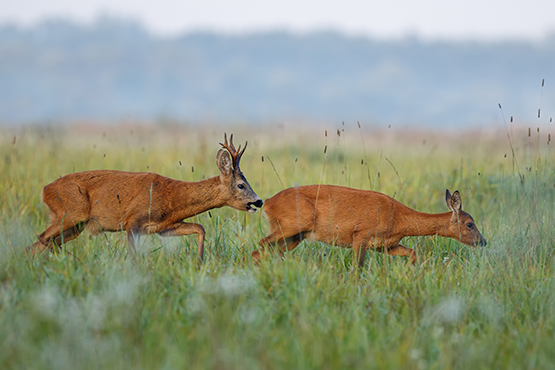To get the most from this years Roe rut, Peter Jones offers some top tips.

(Roe Calling takes practice, however despite what some might have you believe, it is not rocket science)
Anyone who knows a jot about deer stalking will know on which subject I will be focusing this month, as with July comes one of the most magical events that the British countryside has to offer....with the end of July comes the Roe rut.
As I write, I ask myself why it is that I get so excited about the Roe rut? Perhaps my profound fascination for this elegant species of deer comes from their secretive nature and inaccessibility. It is easy for anyone to witness the rut in the larger species of deer by simply visiting a local deer park. I myself have Richmond Park just a few hundred yards from my house, and every year a simple stroll through the park at autumn time allows me to witness Red and Fallow participating in the annual mating frenzy. For Roe it is a different matter, Roe are not accessible through parks, they are truly wild, indeed ask many country folk if they have seen Roe rutting and many, despite many years in the country, will still not have witnessed the activity.
The Roe rut is predominantly the preserve of the deer stalker, who, when armed with the necessary tools and knowledge, has the opportunity to witness what many will never see.
So what do you need in order to maximise your chance of witnessing the action?
Well first of all, the tools. This is the simple bit. As well as a good pair of binoculars and some suitable clothing that will allow you to blend into the countryside, you will also need a Roe call. I find the Buttalo the easiest to master, and this can be purchased online for just a few pounds.
The knowledge is a little harder to acquire, however in a nutshell I’ll offer the following advice.
Roe calling takes practice, however despite what many would have you believe, it is not rocket science. To help master the art, you may wish to watch the following short film: ‘How to Call a Roebuck’ in which I demonstrate the variety of calls and the logic behind them: www.youtube.com/watch
When should you start? In the south east I find that activity starts around the 24th July. If you are further north it will be later, indeed in Scotland it may well be August before there is any real prospect of getting in on the action. DO NOT be tempted to start earlier in the month, you will only educate your quarry as to your tactics before they are inclined to respond.
It is also worth remembering that much of the rut takes place under the cover of darkness and so by the time it is getting light, which at this time of year will be around 4.30am, the Bucks are...shall we say...’spent’ and in need of a few hours ‘R&R’. Personally I find that the best time of day to call is late morning or early evening. If you have the luxury of being able to choose which day you stalk I would also recommend a day in which the forecast is for hot, humid weather. Finally stay alert, when calling, bucks can materialise from the most unexpected directions.
For those that would like a little more, the 'Capreolus Club – official members club of County Deer Stalking', will be holding a Roe Calling Event for its members during the height of the rut. For more information follow this link: roebuck-calling-during-the-rut
If you’d like to view our film from last year, in which I call in a rutting pair of Roe, then please take a moment to watch the following film 'Roebuck Calling During the Rut' youtube.com/watch and next month we hope to bring you more from this year’s rut.
 IN Season in England & Wales: Roebuck, Muntjac Buck & Muntjac Doe.
IN Season in England & Wales: Roebuck, Muntjac Buck & Muntjac Doe.
OFF Season in England & Wales: Roe Doe, Fallow Doe, Fallow Buck, Sika Hind, Sika Stag, Red Hind, Red Stag, CWD Buck & CWD Doe.
IN Season in Scotland: Roebuck, Red Stag, Sika Stag.
OFF Season in Scotland: Roe Doe, Fallow Doe, Fallow Buck, Sika Hind, Red Hind.
(Peter Jones - Editor)



















